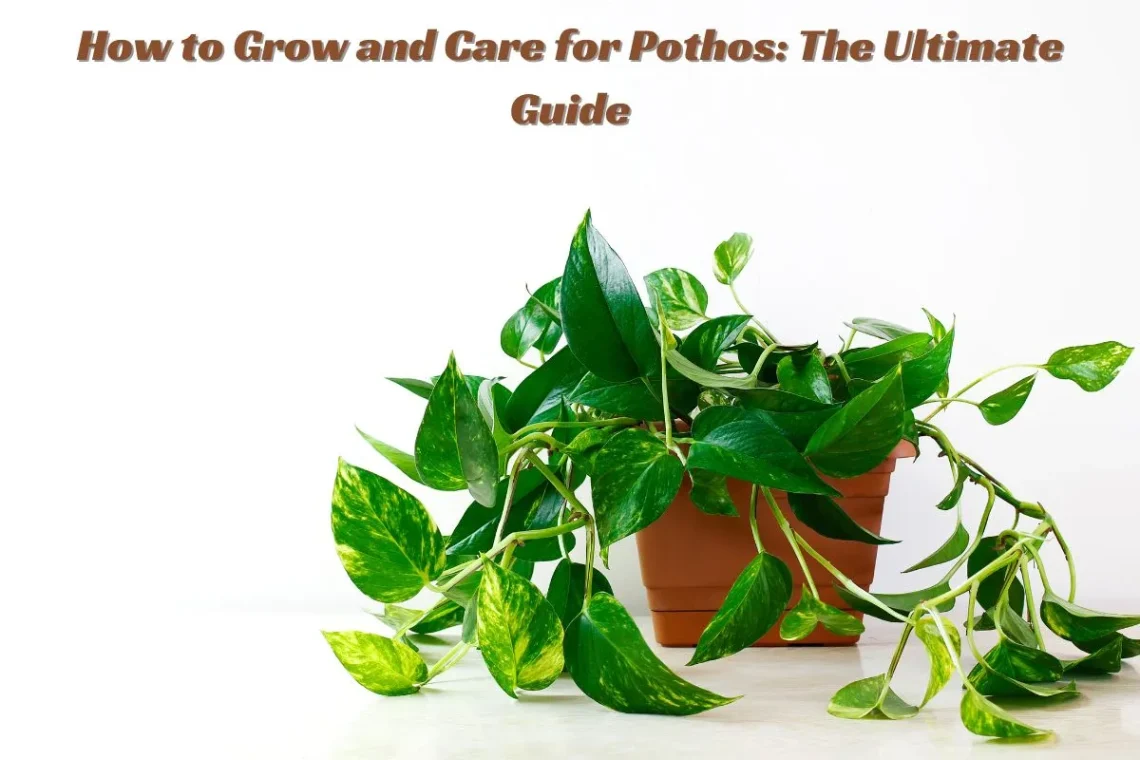
How to Grow and Care for Pothos: The Ultimate Guide
Pothos, also known as Epipremnum aureum, is one of the easiest and most rewarding houseplants to grow. With its lush trailing vines, heart-shaped leaves, and low-maintenance nature, it’s no wonder this plant is a favorite among both beginners and seasoned plant lovers. Whether you’re looking to green up your space or add a touch of tropical beauty, pothos is a perfect choice.
In this guide, you’ll learn everything you need to know about how to grow and care for pothos—plus helpful tips to keep your plant happy, healthy, and thriving indoors or out.
Table of Contents
ToggleWhy Pothos is Perfect for Beginners
Pothos is often dubbed the “devil’s ivy,” not because it’s tricky, but because it’s nearly impossible to kill. This houseplant adapts well to a range of environments and bounces back quickly from neglect. That makes it ideal for first-time plant parents or anyone with a busy lifestyle.
Key Benefits of Pothos:
-
Grows well in low to bright indirect light
-
Purifies indoor air (according to NASA’s Clean Air Study)
-
Easy to propagate in water or soil
-
Comes in many beautiful varieties like golden pothos, marble queen, neon, and jade
Best Light Conditions for Pothos
Pothos thrives in bright, indirect light, but it can tolerate low-light environments, too. Avoid direct sunlight, which can scorch its delicate leaves.
💡 Tip: Variegated types like Marble Queen need more light to maintain their color. In dim spaces, they may revert to solid green.
If you have an east- or north-facing window, your pothos will be perfectly content. No natural light? No problem—pothos can adapt to fluorescent lighting, making it great for offices and dorms.
Choosing the Right Soil for Pothos
Pothos prefers a well-draining potting mix that retains some moisture but doesn’t stay soggy. A general-purpose indoor plant soil works well. You can improve drainage by mixing in:
-
Perlite
-
Orchid bark
-
Coconut coir
Avoid heavy garden soil—it’s too compact for pothos roots.
How to Water Pothos the Right Way
One of the most common mistakes with pothos care is overwatering. This plant is drought-tolerant and prefers its soil to dry out slightly between waterings.
Here’s a simple rule:
-
Water when the top 1–2 inches of soil feel dry
-
Drain excess water completely—pothos hates sitting in soggy soil
Signs of overwatering:
-
Yellowing leaves
-
Root rot smell
-
Mushy stems
Signs of underwatering:
-
Wilting or curling leaves
-
Dry, crispy edges
🌱 Pro Tip: Always use a pot with drainage holes. It helps prevent root rot and keeps your plant healthy.
Humidity and Temperature Needs
Pothos plants are native to Southeast Asia, so they love warm and humid conditions. That said, they tolerate average household humidity just fine.
Ideal conditions:
-
Temperature: 65–85°F (18–29°C)
-
Humidity: 40% and above is ideal
If your home is dry (especially in winter), consider:
-
Misting the leaves occasionally
-
Using a pebble tray or humidifier
-
Grouping plants together to boost ambient moisture
Fertilizing Pothos for Healthy Growth
Pothos is not a heavy feeder, but regular fertilizing during the growing season can encourage lush foliage and long vines.
Use a balanced liquid houseplant fertilizer (like 10-10-10 or 20-20-20) once a month from spring through summer. In fall and winter, reduce feeding as the plant’s growth slows down.
🧪 EEAT Tip: According to Dr. Jane Wu, a horticulturist at GreenLife Labs, “Overfertilizing can lead to salt buildup in the soil, which damages roots. Always follow the dosage on the label and flush the soil every few months.”
How to Prune and Train Pothos
Pothos vines can grow up to 10 feet indoors, making them perfect for hanging baskets, climbing trellises, or trailing down shelves.
Pruning tips:
-
Use clean, sharp scissors
-
Cut above a node (where the leaf meets the stem)
-
Remove yellow or damaged leaves to promote new growth
Pruning encourages bushier growth and keeps the plant tidy. You can also train your pothos up a moss pole, along curtain rods, or across walls with adhesive hooks.
Propagating Pothos: Easy and Fun!
One of the most exciting parts of pothos care is propagation. It’s so simple that even kids can do it!
How to propagate in water:
-
Cut a 4–6 inch stem below a node with 2–3 leaves
-
Place it in a glass of clean water (covering the node)
-
Keep it in bright, indirect light
-
Change the water every few days
-
Roots will appear in 1–2 weeks
Once roots are about 2 inches long, you can plant it in soil or keep it growing in water.
Common Pothos Problems and Solutions
Even though pothos is low-maintenance, a few issues can crop up. Here’s how to identify and fix them:
| Problem | Cause | Solution |
|---|---|---|
| Yellow leaves | Overwatering | Let soil dry out and adjust watering |
| Brown tips | Low humidity or underwatering | Mist plant or increase humidity |
| Leggy vines | Not enough light | Move to brighter, indirect light |
| No new growth | Lack of nutrients or light | Fertilize and improve light conditions |
| Sticky leaves | Pests like mealybugs or aphids | Wipe with neem oil or insecticidal soap |
🐛 Expert Advice: “Always inspect your pothos regularly for pests, especially under the leaves,” says Elena Grace, a certified plant therapist. “Early detection keeps infestations under control.”
Is Pothos Toxic to Pets?
Unfortunately, yes—pothos is toxic to cats and dogs if ingested. It contains calcium oxalate crystals, which can irritate the mouth and digestive tract.
Symptoms may include:
-
Drooling
-
Vomiting
-
Difficulty swallowing
Keep pothos out of reach of pets or opt for pet-friendly alternatives like spider plants or parlor palms.
Final Thoughts: Your Pothos Journey Starts Here
Caring for pothos is truly one of the most beginner-friendly ways to start your indoor gardening journey. With its resilience, beauty, and air-purifying benefits, it’s no wonder this plant has become a staple in so many homes.
Whether you’re styling your pothos on a bookshelf, hanging it in the bathroom, or letting it trail along your desk, it’s sure to add a fresh, calming vibe to any space.
Just remember: light, water, and love—and your pothos will thrive for years to come. 🌿
FAQs About Growing Pothos
Q: Can pothos grow in water forever?
Yes! Pothos can grow hydroponically with proper care. Just change the water weekly and add a liquid nutrient occasionally.
Q: Why are my pothos leaves turning yellow?
Most likely due to overwatering. Check the soil and adjust your watering schedule.
Q: How fast does pothos grow?
Under ideal conditions, pothos can grow 12–18 inches per month, especially in spring and summer.
Q: Is pothos a good bedroom plant?
Yes! Pothos releases oxygen and can improve air quality, making it perfect for bedrooms.
You May Also Like

Stylish and Safe Log Burner Hearth Ideas: Design Tips from Real Homes
July 16, 2025
Small Changes, Big Impact: Interior Design Tips That Elevate Your Home
November 14, 2025

